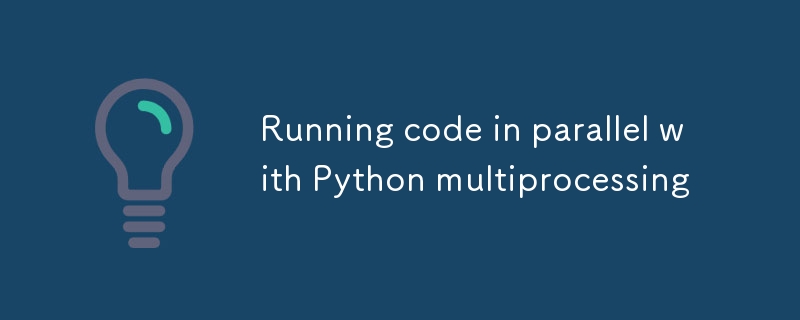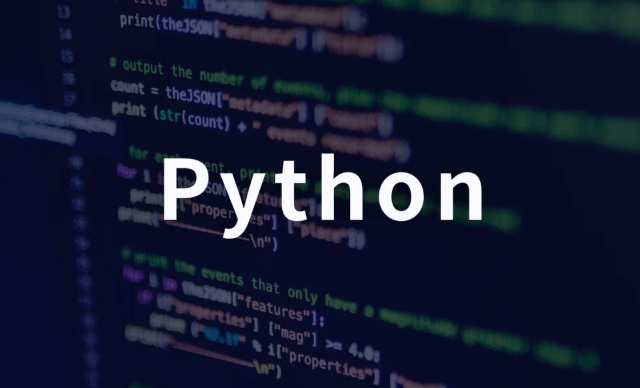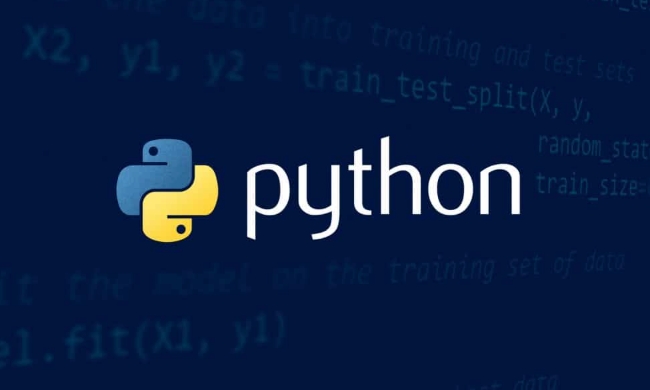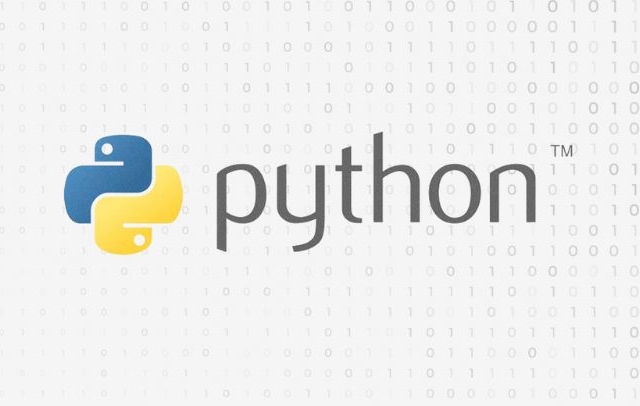Running code in parallel with Python multiprocessing
Jul 16, 2025 am 03:51 AMUsing Python's multiprocessing module can improve performance, but attention should be paid to startup methods, Pool usage, process communication and exception handling. 1. Choose the appropriate startup method: fork (Unix fast but unstable), spawn (cross-platform recommendation), forkserver (profitable for frequent creation); 2. Use Pool to manage concurrent tasks, control the number of processes, and reasonably select map or apply_async; 3. Inter-process communication can be used to communicate with Queue, Pipe, Value, Array or Manager, pay attention to performance and security; 4. Strengthen exception handling, use logging to debug, and can be simulated by a single process during development.

Python's multiprocessing module can indeed make your code run faster, provided that the correct method is used. It bypasses GIL (global interpreter lock) by creating multiple processes, truly implementing parallel computing. But many people are prone to traps when using it, such as inter-process communication, resource competition, efficiency loss, etc.

The following key points are the most common and most prone to problems in actual use. Let’s take a look at them one by one.
How to choose the right startup method
There are three ways to start multiprocessing: fork , spawn and forkserver . The default values of different systems are different, and the behaviors are also different.

- fork (Unix only) copies the status of the current process, including all variables and threads. Although it is fast, it is easy to cause instability. For example, fork may cause deadlocks in a multi-threaded environment.
- spawn creates a clean new process that inherits only the necessary resources. Good cross-platform compatibility and is recommended for production environments.
- forkserver is a compromise solution, suitable for scenarios where child processes need to be created frequently.
If you find that the program is not running properly on some platforms, you can try to explicitly specify the startup method:
import multiprocessing as mp mp.set_start_method('spawn')
Use Pool to manage concurrent tasks more efficiently
When you have a bunch of independent tasks to process, such as batch download, image processing or data analysis, using Pool is the most worry-free way.

It allows you to set the maximum number of concurrencies and automatically schedule tasks to various processes. Commonly used methods include map , apply_async , etc.
For example, suppose you want to process a set of files in parallel:
from multiprocessing import Pool
def process_file(filename):
# Assume that this is the time-consuming processing logic return f"Processed {filename}"
if __name__ == '__main__':
files = ['file1.txt', 'file2.txt', 'file3.txt']
with Pool(4) as pool:
results = pool.map(process_file, files)
print(results)A few suggestions:
- Control the size of
Poolwell and don't open too many processes, which will slow down the system. - If there is no dependency between tasks, use
maporimapfirst, which is more concise. - If you need asynchronous callbacks or error handling, you can use
apply_async, but remember to addjoin()and exception capture.
Pay attention to communication and data sharing between processes
Sometimes you need to exchange data between multiple processes, so you should pay attention to how to transmit data to be safe and efficient.
-
QueueandPipeare commonly used communication methods,Queueis more suitable for multiple consumer/producer models. - If you just read shared data, you can use
ValueorArray, but the write operation must be locked. - Another type is to use
Manager, which can create shared objects that support multiple types (dictionaries, lists, etc.), but there will be some performance losses.
Let's give a simple queue example:
from multiprocessing import Process, Queue
def worker(q):
item = q.get()
print(f"Processing: {item}")
if __name__ == '__main__':
q = Queue()
for i in range(5):
q.put(i)
processes = [Process(target=worker, args=(q,)) for _ in range(3)]
for p in processes:
p.start()
for p in processes:
p.join()Remember, try to avoid frequent replication when passing big data between processes, otherwise it will affect performance. Consider using shared memory if necessary.
Don't ignore exception handling and debugging
There is a problem with a multi-process program, and debugging is much more troublesome than single-threaded ones. The most common ones are "stuck" or "silent failure".
You can do this:
- Add try-except to each child process and print out the exception.
- Use logging instead of print to facilitate viewing of the output of each process.
- If the program is stuck, check whether it is because of deadlock, queue blocking, or join() does not end.
Another trick: first use a single process to simulate the execution process during the development stage, and then switch back to multi-process mode after confirming that there is no problem.
Basically that's it. multiprocessing is powerful, but also has some complexity, especially in cross-platform and resource control. If used well, it can significantly improve program performance; if used poorly, it will increase maintenance costs.
The above is the detailed content of Running code in parallel with Python multiprocessing. For more information, please follow other related articles on the PHP Chinese website!

Hot AI Tools

Undress AI Tool
Undress images for free

Undresser.AI Undress
AI-powered app for creating realistic nude photos

AI Clothes Remover
Online AI tool for removing clothes from photos.

Clothoff.io
AI clothes remover

Video Face Swap
Swap faces in any video effortlessly with our completely free AI face swap tool!

Hot Article

Hot Tools

Notepad++7.3.1
Easy-to-use and free code editor

SublimeText3 Chinese version
Chinese version, very easy to use

Zend Studio 13.0.1
Powerful PHP integrated development environment

Dreamweaver CS6
Visual web development tools

SublimeText3 Mac version
God-level code editing software (SublimeText3)
 PHP calls AI intelligent voice assistant PHP voice interaction system construction
Jul 25, 2025 pm 08:45 PM
PHP calls AI intelligent voice assistant PHP voice interaction system construction
Jul 25, 2025 pm 08:45 PM
User voice input is captured and sent to the PHP backend through the MediaRecorder API of the front-end JavaScript; 2. PHP saves the audio as a temporary file and calls STTAPI (such as Google or Baidu voice recognition) to convert it into text; 3. PHP sends the text to an AI service (such as OpenAIGPT) to obtain intelligent reply; 4. PHP then calls TTSAPI (such as Baidu or Google voice synthesis) to convert the reply to a voice file; 5. PHP streams the voice file back to the front-end to play, completing interaction. The entire process is dominated by PHP to ensure seamless connection between all links.
 How to use PHP combined with AI to achieve text error correction PHP syntax detection and optimization
Jul 25, 2025 pm 08:57 PM
How to use PHP combined with AI to achieve text error correction PHP syntax detection and optimization
Jul 25, 2025 pm 08:57 PM
To realize text error correction and syntax optimization with AI, you need to follow the following steps: 1. Select a suitable AI model or API, such as Baidu, Tencent API or open source NLP library; 2. Call the API through PHP's curl or Guzzle and process the return results; 3. Display error correction information in the application and allow users to choose whether to adopt it; 4. Use php-l and PHP_CodeSniffer for syntax detection and code optimization; 5. Continuously collect feedback and update the model or rules to improve the effect. When choosing AIAPI, focus on evaluating accuracy, response speed, price and support for PHP. Code optimization should follow PSR specifications, use cache reasonably, avoid circular queries, review code regularly, and use X
 python seaborn jointplot example
Jul 26, 2025 am 08:11 AM
python seaborn jointplot example
Jul 26, 2025 am 08:11 AM
Use Seaborn's jointplot to quickly visualize the relationship and distribution between two variables; 2. The basic scatter plot is implemented by sns.jointplot(data=tips,x="total_bill",y="tip",kind="scatter"), the center is a scatter plot, and the histogram is displayed on the upper and lower and right sides; 3. Add regression lines and density information to a kind="reg", and combine marginal_kws to set the edge plot style; 4. When the data volume is large, it is recommended to use "hex"
 PHP integrated AI emotional computing technology PHP user feedback intelligent analysis
Jul 25, 2025 pm 06:54 PM
PHP integrated AI emotional computing technology PHP user feedback intelligent analysis
Jul 25, 2025 pm 06:54 PM
To integrate AI sentiment computing technology into PHP applications, the core is to use cloud services AIAPI (such as Google, AWS, and Azure) for sentiment analysis, send text through HTTP requests and parse returned JSON results, and store emotional data into the database, thereby realizing automated processing and data insights of user feedback. The specific steps include: 1. Select a suitable AI sentiment analysis API, considering accuracy, cost, language support and integration complexity; 2. Use Guzzle or curl to send requests, store sentiment scores, labels, and intensity information; 3. Build a visual dashboard to support priority sorting, trend analysis, product iteration direction and user segmentation; 4. Respond to technical challenges, such as API call restrictions and numbers
 python list to string conversion example
Jul 26, 2025 am 08:00 AM
python list to string conversion example
Jul 26, 2025 am 08:00 AM
String lists can be merged with join() method, such as ''.join(words) to get "HelloworldfromPython"; 2. Number lists must be converted to strings with map(str, numbers) or [str(x)forxinnumbers] before joining; 3. Any type list can be directly converted to strings with brackets and quotes, suitable for debugging; 4. Custom formats can be implemented by generator expressions combined with join(), such as '|'.join(f"[{item}]"foriteminitems) output"[a]|[
 python connect to sql server pyodbc example
Jul 30, 2025 am 02:53 AM
python connect to sql server pyodbc example
Jul 30, 2025 am 02:53 AM
Install pyodbc: Use the pipinstallpyodbc command to install the library; 2. Connect SQLServer: Use the connection string containing DRIVER, SERVER, DATABASE, UID/PWD or Trusted_Connection through the pyodbc.connect() method, and support SQL authentication or Windows authentication respectively; 3. Check the installed driver: Run pyodbc.drivers() and filter the driver name containing 'SQLServer' to ensure that the correct driver name is used such as 'ODBCDriver17 for SQLServer'; 4. Key parameters of the connection string
 python pandas melt example
Jul 27, 2025 am 02:48 AM
python pandas melt example
Jul 27, 2025 am 02:48 AM
pandas.melt() is used to convert wide format data into long format. The answer is to define new column names by specifying id_vars retain the identification column, value_vars select the column to be melted, var_name and value_name, 1.id_vars='Name' means that the Name column remains unchanged, 2.value_vars=['Math','English','Science'] specifies the column to be melted, 3.var_name='Subject' sets the new column name of the original column name, 4.value_name='Score' sets the new column name of the original value, and finally generates three columns including Name, Subject and Score.
 Optimizing Python for Memory-Bound Operations
Jul 28, 2025 am 03:22 AM
Optimizing Python for Memory-Bound Operations
Jul 28, 2025 am 03:22 AM
Pythoncanbeoptimizedformemory-boundoperationsbyreducingoverheadthroughgenerators,efficientdatastructures,andmanagingobjectlifetimes.First,usegeneratorsinsteadofliststoprocesslargedatasetsoneitematatime,avoidingloadingeverythingintomemory.Second,choos






